
PRAMANA-JOURNAL OF PHYSICS
Scope & Guideline
Fostering Innovation in the Study of the Cosmos
Introduction
Aims and Scopes
- Condensed Matter Physics:
Research focusing on the properties of condensed phases of matter, including studies on nanomaterials, superconductors, and magnetic materials. - Quantum Mechanics and Quantum Field Theory:
Exploration of quantum phenomena, including quantum entanglement, quantum optics, and the application of quantum mechanics in various physical systems. - Thermal and Statistical Physics:
Studies that delve into thermodynamic properties, heat transfer mechanisms, and statistical behavior of systems under various conditions. - Plasma Physics and Magnetohydrodynamics (MHD):
Investigations into the behavior of plasma and magnetic fields, including applications in astrophysics and fusion energy. - Nanofluids and Fluid Dynamics:
Research on the flow characteristics of nanofluids and their applications in thermal management and engineering processes. - Astrophysics and Cosmology:
Studies that address fundamental questions about the universe, including the behavior of celestial bodies and the evolution of cosmic structures. - Computational Physics and Modeling:
Utilization of computational techniques and simulations to solve complex physical problems, including fluid dynamics and material properties.
Trending and Emerging
- Nanotechnology and Nanomaterials:
Research on the properties and applications of nanomaterials is rapidly growing, driven by their potential in energy, electronics, and biomedical fields. - Machine Learning and AI in Physics:
The integration of machine learning and artificial intelligence techniques for data analysis and modeling in various physics domains is gaining momentum. - Quantum Information and Quantum Computing:
There is a noticeable increase in research related to quantum information theory, quantum computing, and their applications in secure communications and computational tasks. - Multiscale and Multifunctional Materials:
Emerging studies focus on materials that exhibit multiple functionalities and behaviors across different scales, particularly in the context of energy applications. - Complex Systems and Nonlinear Dynamics:
Research in complex systems and nonlinear dynamics is trending, reflecting a growing interest in understanding emergent phenomena in various physical contexts.
Declining or Waning
- Classical Electrodynamics:
Research articles focusing on classical theories of electromagnetism have decreased, possibly due to the rising interest in quantum electrodynamics and modern applications. - Basic Nuclear Physics:
Papers centered solely on nuclear structure without application-focused research are becoming less frequent as interest shifts towards applied nuclear physics and interdisciplinary studies. - Traditional Thermodynamics:
The exploration of classical thermodynamic principles in isolation appears to be declining, with more emphasis being placed on statistical and non-equilibrium thermodynamics. - Fundamental Particle Physics:
Research that does not connect to broader applications or experimental validation in particle physics is experiencing waning interest, as researchers focus on experimental results and theoretical advancements.
Similar Journals
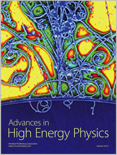
Advances in High Energy Physics
Illuminating the Path of High Energy Physics InnovationAdvances in High Energy Physics, published by HINDAWI LTD, is a premier open-access journal dedicated to the progressive field of Nuclear and High Energy Physics. With an ISSN of 1687-7357 and an E-ISSN of 1687-7365, this journal has been at the forefront of scientific discourse in high energy physics since its inception in 2007. The journal is notable for its impact within the community, currently holding a Q2 ranking in 2023 and positioned at #36 out of 87 in its category according to Scopus, highlighting its significant contribution to ongoing research and advancement in the field. Its accessible nature enables researchers, professionals, and students to engage with cutting-edge findings that shape our understanding of the universe. Spanning publications from 2010 through 2024, Advances in High Energy Physics serves as an invaluable resource for those looking to stay informed about the latest developments and methodologies in high energy physics across the globe.

Jurnal Fizik Malaysia
Exploring New Frontiers in the Realm of Physics.Jurnal Fizik Malaysia is a prominent academic journal dedicated to advancing the field of physics, published by the esteemed Institut Fizik Malaysia. With an aim to foster knowledge dissemination and research collaboration among physicists, the journal serves as a vital platform for original research articles, reviews, and technical notes that cover various sub-disciplines of physics. Although the journal operates under a traditional subscription model, its commitment to quality has been bolstered by a rigorous peer-review process, ensuring high academic standards. Researchers and students in Malaysia and beyond are encouraged to engage with this journal, contributing to a deeper understanding of physical sciences and its applications. Moreover, with its ISSN 0128-0333, Jurnal Fizik Malaysia continues to play a significant role in the scientific community, enhancing visibility and accessibility for local and international research outputs in the ever-evolving landscape of physics.
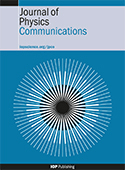
Journal of Physics Communications
Connecting Ideas, Inspiring DiscoveriesJournal of Physics Communications, published by IOP Publishing Ltd, serves as a significant platform for the dissemination of innovative research in the realm of physics and astronomy. Since its inception in 2017, this Open Access journal has fostered a collaborative environment, allowing researchers, professionals, and students to share their findings and ideas without barriers. With an ISSN of 2399-6528, the journal has established its credibility in the academic community, achieving a ranking of Q3 in the 2023 category of Physics and Astronomy (miscellaneous), as well as a respectable position in Scopus with a rank of #122 out of 243 in its field. The journal's focus is on bridging theoretical concepts and practical applications, making it an essential resource for those engaged in the evolving landscape of physics. The Journal of Physics Communications not only aims to advance knowledge but also to inspire interdisciplinary collaboration, inviting contributions from diverse areas within physics. Authors and readers alike will find this journal particularly beneficial to stay updated on emerging trends and innovative research.
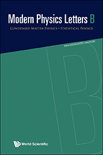
MODERN PHYSICS LETTERS B
Advancing the frontiers of condensed matter and nonlinear physics.MODERN PHYSICS LETTERS B, published by World Scientific Publishing Co Pte Ltd, is a pivotal journal in the fields of Condensed Matter Physics and Statistical and Nonlinear Physics. With an ISSN of 0217-9849 and an E-ISSN of 1793-6640, this journal has been a prominent platform for innovative physics research since its inception in 1996, catering to a global audience of researchers, professionals, and students alike. Its impact is reflected in its Scopus rankings, with a commendable position in the 65th percentile for Statistical and Nonlinear Physics and the 54th percentile for Condensed Matter Physics. Despite its classification in the Q3 quartile, MODERN PHYSICS LETTERS B is dedicated to advancing knowledge through rapid dissemination of high-quality research, thus playing a critical role in shaping future developments in its disciplines. Published in Singapore, the journal encourages contributions that address contemporary challenges and breakthroughs in physics, fostering an engaged scholarly community.

CHINESE PHYSICS LETTERS
Rapidly Publishing Groundbreaking DiscoveriesChinese Physics Letters is a prestigious journal published by IOP Publishing Ltd, based in the United Kingdom. Since its inception in 1984, the journal has served as a vital platform for disseminating impactful research in the field of physics, achieving a noteworthy Q1 ranking in the category of Physics and Astronomy (miscellaneous) as of 2023. Renowned for its rapid publication process, this journal is dedicated to providing a forum for high-quality, concise articles that address innovative theoretical and experimental findings relevant to both the academic community and industry practitioners. With an impressive Scopus rank of #52 out of 243, placing it in the 78th percentile, Chinese Physics Letters continues to influence the global physics landscape. Researchers, professionals, and students alike find this journal indispensable for staying abreast of the latest developments and trends in physics.
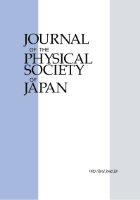
JOURNAL OF THE PHYSICAL SOCIETY OF JAPAN
Advancing the Frontiers of Physics and AstronomyThe JOURNAL OF THE PHYSICAL SOCIETY OF JAPAN, published by the Physical Society of Japan, has been at the forefront of advancing knowledge in the field of Physics and Astronomy since its inception in 1946. With a commendable reputation reflected in its Q2 ranking within its category for 2023, this journal serves as a vital platform for disseminating high-quality research and innovative concepts. Researchers and professionals alike can engage with cutting-edge studies and reviews that span a diverse range of topics pivotal to the physical sciences. Although the journal does not currently operate with an open access model, it maintains a robust impact on the global physics community, evidenced by its placement in the 59th percentile among a competitive pool of 243 journals. With an unwavering commitment to bridging theory and application, the JOURNAL OF THE PHYSICAL SOCIETY OF JAPAN continues to inspire and cultivate scholarly discourse and collaboration across disciplines.
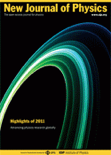
NEW JOURNAL OF PHYSICS
Shaping the future of physics through collaboration.NEW JOURNAL OF PHYSICS, published by IOP Publishing Ltd, is a prestigious open-access journal that has been at the forefront of the physics community since its inception in 1998. With an impact factor that places it in the Q1 category of Physics and Astronomy (miscellaneous) and a commendable ranking of #49 out of 243 in the general physics and astronomy category according to Scopus, this journal is recognized for its significant contribution to advancing research in the field. The journal caters to a broad scope of topics, providing a platform for the dissemination of cutting-edge research findings and innovative theoretical explorations. Operating from the United Kingdom, it offers a truly international perspective, making its contents accessible and impactful to a global audience. With robust open-access options, the NEW JOURNAL OF PHYSICS ensures that research findings are freely available, promoting collaboration and knowledge sharing among researchers, professionals, and students alike. This commitment to accessibility, combined with its high-quality content, makes it an essential resource for anyone engaged in the physics community.
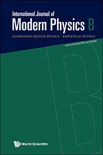
INTERNATIONAL JOURNAL OF MODERN PHYSICS B
Exploring innovative theories in modern physics.The INTERNATIONAL JOURNAL OF MODERN PHYSICS B, published by WORLD SCIENTIFIC PUBL CO PTE LTD from Singapore, represents a pivotal platform for researchers in the fields of Condensed Matter Physics and Statistical and Nonlinear Physics. With a rich history spanning from 1996 to the present, the journal aims to foster cutting-edge research and innovative theoretical advancements, presenting high-quality peer-reviewed articles that address contemporary challenges in modern physics. Although it operates under a traditional access model, the journal maintains a notable impact, with a commendable ranking within the Scopus metrics – positioning it in the 63rd percentile for Statistical and Nonlinear Physics and the 53rd percentile for Condensed Matter Physics. The Q3 category ranking further underscores its relevance and growing stature in the scientific community. This journal is essential for physicists, researchers, and students seeking to keep abreast of the latest developments and theoretical insights in these dynamic areas of study.

Science China-Physics Mechanics & Astronomy
Illuminating the Path to Scientific DiscoveryScience China-Physics Mechanics & Astronomy, published by SCIENCE PRESS, stands as a prestigious journal within the Physics and Astronomy domain, particularly recognized for its contributions to the understanding of fundamental and applied physics. With an exhilarating Q1 ranking in the 2023 category and earning a remarkable scopus rank of #21 out of 243, the journal demonstrates its significant impact, being positioned in the 91st percentile of its field. Operating under an Open Access model, it facilitates the broad dissemination of high-quality research, ensuring accessibility for researchers, professionals, and students worldwide. Its scope covers a variety of essential topics in physics and astronomy, promoting a comprehensive understanding of the latest advancements from 2010 through 2024. The journal is a vital resource for anyone aiming to stay at the forefront of research in these dynamic fields, with its prominent address located in Beijing, China, symbolizing its global influence.

Frontiers of Physics
Connecting Ideas, Inspiring Physics ExcellenceFrontiers of Physics, published by Higher Education Press, is a premier open-access journal dedicated to fostering innovative research and excellence within the field of physics. With an ISSN of 2095-0462 and an E-ISSN of 2095-0470, this rapidly growing journal has established itself as a valuable platform for disseminating cutting-edge findings, covering a diverse range of topics from theoretical frameworks to experimental advancements. Notably, Frontiers of Physics has achieved an impressive Q1 ranking in the 2023 Scopus Quartiles for Physics and Astronomy, securing a competitive 5th out of 81 positions in its category, reflecting a high impact factor that underscores its importance to the scientific community. Since its inception in 2011 and continuing through 2024, the journal aims to bridge the gap between academia and industry, encouraging collaboration among researchers, professionals, and students alike. Its commitment to open access ensures that high-quality research is readily accessible, thereby promoting knowledge sharing and advancement in the global physics community. Explore the potential of your research in Frontiers of Physics, where the future of physics flourishes.